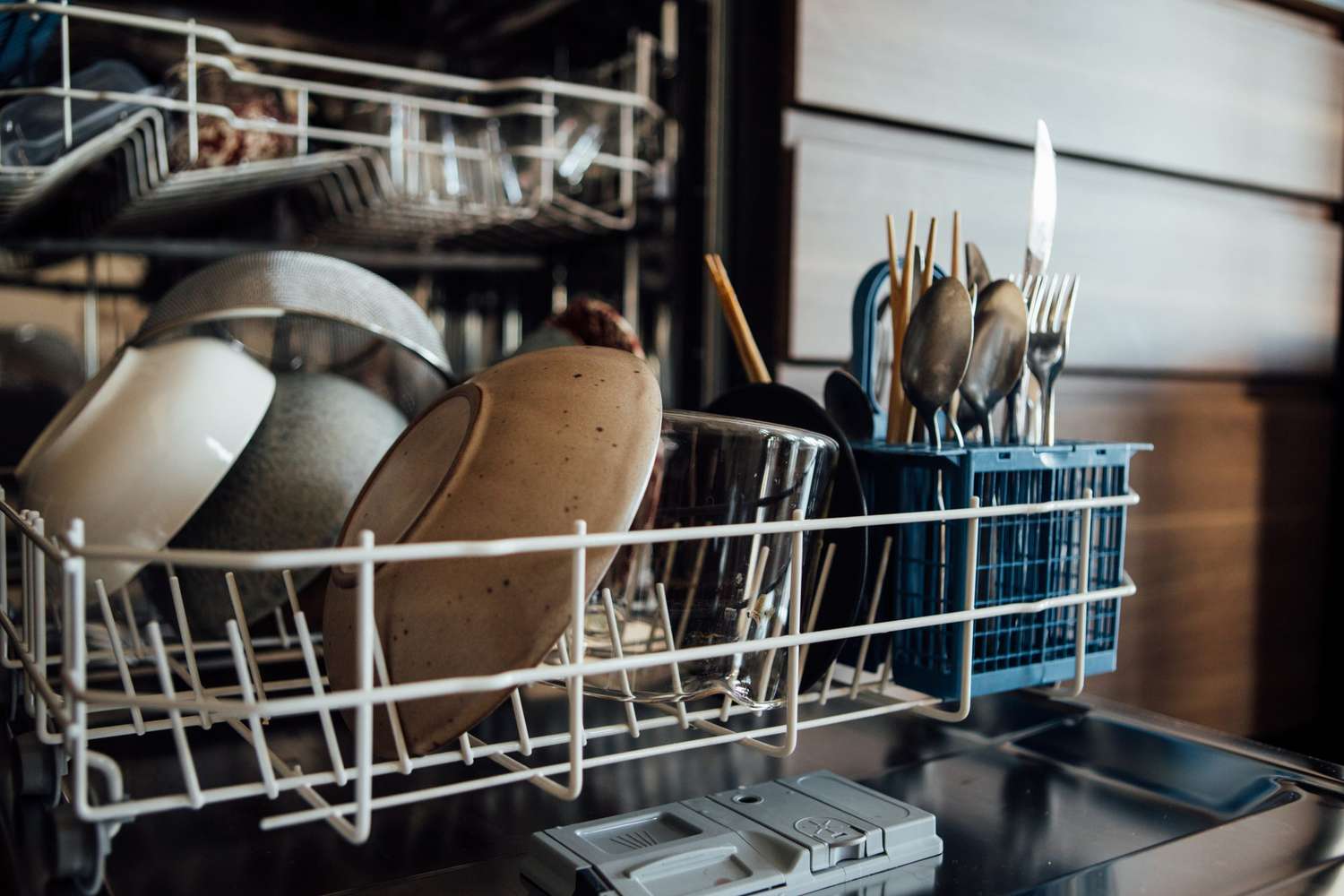
How to Unclog a Dishwasher, According to Appliance Specialists
A clogged dishwasher can be a big surprise and a tremendous nuisance. Recognized by water pooling at the base or an abnormal noise or odor, if not resolved, a clogged dishwasher can throw off your whole routine.
As always, consulting the user’s manual is a good practice to arm yourself with basic knowledge of your machine. You’ll want to acquaint yourself with the various parts and their functions in order to make the most of your appliance and treat it well.
If the manual doesn’t help you resolve the problem, we’re here to help. We consulted appliance experts to learn the best ways to unclog a dishwasher and keep it running efficiently.
How to Identify a Clogged Dishwasher
Before getting started, first be sure that a clog is the culprit behind your dishwasher running improperly. “Common indicators include water pooling at the bottom of the dishwasher and dishes coming out dirty or still soapy,” says appliance expert Forrest Webber.
If you have garbage disposal, be sure it also run it and ensure that it’s not the source of the clog. “In most cases, the dishwasher empties into the disposal,” explains Glenn Lewis, president of Mr. Appliance.
To identify a clog, Lewis recommends inspecting the drain hose coming from your dishwasher. If you see a dark spot, that could be a clog. If this is the source of the clog, you’ll need to disconnect the hose and use a drain snake to remove it. (Depending on how comfortable you are with plumbing, you may or may not want to call in a professional.)
A clog could have also formed in your dishwasher’s filter. Pull out the bottom rack of the dishwasher and inspect the filter. Excess food and debris could easily be the cause of the clog.
How to Unclog a Dishwasher Filter
A filter clog is the most common—and the most manageable—of all potential sources of the problem. Appliance specialist Sofia Wang offers these simple instructions for unclogging your dishwasher.
Materials Needed:
- Soft scrub brush
- White vinegar
- Dishwasher-safe bowl
- Baking soda
- Hot water
Instructions:
- First, unplug the unit and/or turn off the breaker. This step is very important for safety. Additionally, never put your hand into the sump while working. This holds all of the functioning components of a dishwasher, and there may be sharp edges or broken glass hidden from view.
- Pull the dishwasher’s bottom rack out to expose the drain area. Use a soft scrub brush to remove any noticeable debris. Replace the rack.
- Place a cup of vinegar in a dishwasher-safe bowl on the top rack and run a hot cycle. This will help dissolve grease.
- After the cycle has run, find and remove the filter (a twist-off piece of the appliance, usually near the drain).
- Give the filter a good scrub under warm water. Replace the filter.
- Add a half cup of baking soda down the drain, followed by a kettle of hot water, and let the two fizz, dissolving residual debris.
- Run a short rinse cycle to ensure the clog is resolved.
How to Avoid Future Clogs
A little maintenance goes a long way in keeping your dishwasher free of clogs. Consider the following tips to keep your dishwasher running without issue.
- First, be sure to scrape all food residue off dishes before loading them into the dishwasher. “All food needs to go in the trash, [compost], or the garbage disposal,” reminds Webber.
- Don’t load dishes too closely together. This prevents water to flow freely—which means food residue can be left behind, says Wang.
- Never use the dishwasher to remove labels or price stickers from your dishes or pots and pans, cautions Lewis. (You can learn how to remove sticker adhesive here.)
- Inspect your dishwasher’s filter every few months, advises Wang. A weekly rinse under the sink will keep small particles from building up.
- Clean your dishwasher completely once a month, advises Webber.
When to Call a Pro
Everyone has a different level of familiarity with plumbing basics. To put it succinctly, call in the pros whenever you feel out of your element. “The last thing you want to do is make a simple problem worse by trying to do something you are not comfortable doing,” says Lewis.
Wang also recommends calling a pro if you’ve cleared the drain but still hear a grinding noise—such as a low growl from the motor, as this is likely a pump problem. She notes that a persistent odor could be a sign of trapped water or a failing component. Additionally, water collecting at the bottom of the dishwasher, even when there is no blockage in the drain, could be a sign of a clogged hose or a dying pump.
Moreover, in the case of any appliance malfunction, you could be facing an electrical problem. “If you smell a burning smell, it’s time to call a professional,” cautions Webber. In this case, it’s likely an electrical issue—and time to call an electrician.










